#william michael rossetti
Text
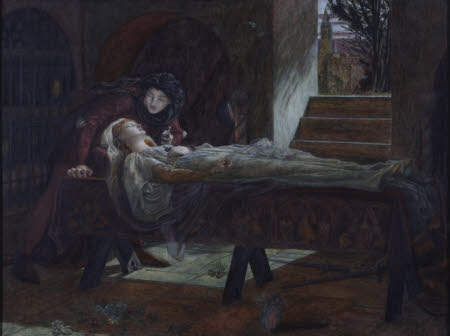
Lucy Madox Brown, William Michael Rossetti - The Tomb Scene from Shakespeare's 'Romeo and Juliet' (Act V, Scene III).
#Lucy Madox Brown#William Michael Rossetti#romeo and juliet#The Tomb Scene#tomb#death#catacombs#suicide#found dead
5 notes
·
View notes
Text
I see people make comments sometimes about the Rossetti siblings’ relationships like oooh Maria was a nun, Dante Gabriel was a slut painter, William Michael was an atheist, and Christina was a pious and chaste poet girl. But they all seemingly had love and respect for each other throughout their lifetimes despite their differences. But that’s literally how any family with four kids will end up.
#as one of four children myself#i'm the youngest and an aroace poet girl so... i definitely identify w christina#though not so much the religiosity but y'know#text post#rossetti family#christina rossetti#dante gabriel rossetti#maria francesca rossetti#william michael rossetti#rossetti#rossetti-polidori family#that being said the dynamics of the sibling relationships they all had are SO. FASCINATING.#especially w three out of four of them being incredibly accomplished writers/artists/critics
1 note
·
View note
Text
Part 3 of PHOTOGRAPHS OF THE ROMANTICS, A TUMBLR HISTORY EXHIBIT: photos i've collected of people related to the english writers of the romantic period and/or who were part of the byron-shelley circle.
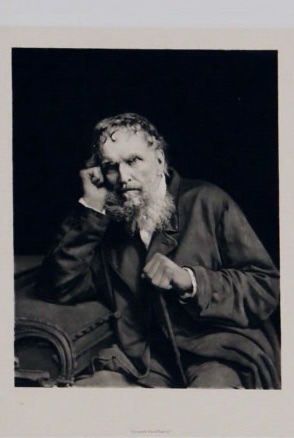

Edward John Trelawny (above: a photo of him as an elder compared to a portrait of him as a young man). A key member of the circle, celebrity/adventurer/writer, friend and biographer of Byron and Shelley. Outlived everyone. Proposed to both Mary Shelley and Claire Clairmont and remained in touch with them their whole lives. Really interesting person but also a chronic liar, making it difficult to tell which parts of his life stories are fact or fiction. He is buried next to Shelley (who is buried next to Keats); Trelawny bought the cemetery plot when Shelley died decades prior and later offered it to Mary Shelley who declined it. The last two portraits below were done by Joseph Severn, the artist who was friends with Keats, did most of his portraits, & took care of him as he was dying in Rome. I don't think Trelawny ever met Keats.


Jane Williams Hogg (née Cleveland). She was married to an abusive man named John Edward Johnson who she left for Edward Ellecker Williams, who was the father of her first two children and a friend of Percy Bysshe Shelley's cousin Thomas Medwin. The family then lived in the same household with the Shelley family (Mary, Percy, and their children) in Italy. Percy dedicated some of his last poems to Jane. After Percy and Edward died together in a boating accident she lived with Mary before partnering with Shelley's best friend from college Thomas Jefferson Hogg who she had two children with.


I think the similarity between her younger portrait (1822, age 24) & her photograph (date unknown, but she died in 1884 & seems like she could be in her 80s in the photo) are very striking; you can clearly see the nose, eyes, hair, and mouth are exactly the same, only older.
She also knew George Eliot and William Michael Rossetti; I mentioned the Rossettis in my last post. I wonder if she ever discussed Shelley's connection to John Polidori with them; I don't believe she ever met John Polidori, but maybe the Shelleys would have mentioned him to her.
Thomas Medwin, another key player of the Shelley-Byron circle in Italy. Cousin of Percy Bysshe Shelley and friend/biographer of Shelley and Byron.


Wilhelm Charles Gaulis Clairmont, the nephew of Clara Mary Jane Clairmont aka Claire Clairmont. Wilhelm was the son of her half-brother Charles Gaulis Clairmont.

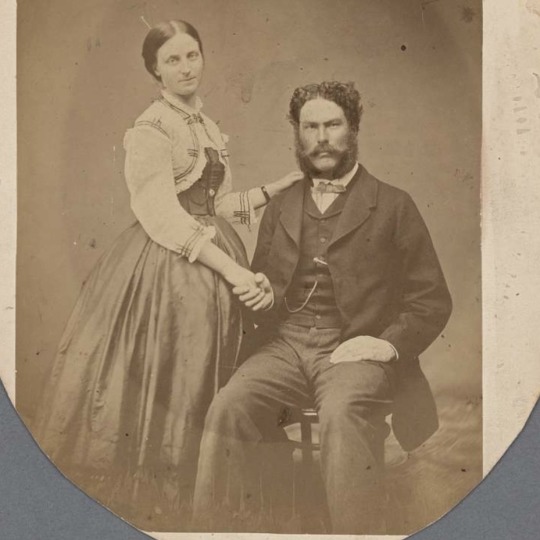
#photographs of the romantics#literature#english literature#romanticism#lord byron#percy shelley#percy bysshe shelley#thomas medwin#jane williams hogg#thomas jefferson hogg#shelley#byron#mary shelley#mary godwin shelley#claire clairmont#edward trelawny#victorian#romantic#english romanticism#the romantics#romantic poets#victorian era#1800s photography#1800s#history#english poetry#poetry#romantics#shelley-byron circle
57 notes
·
View notes
Text
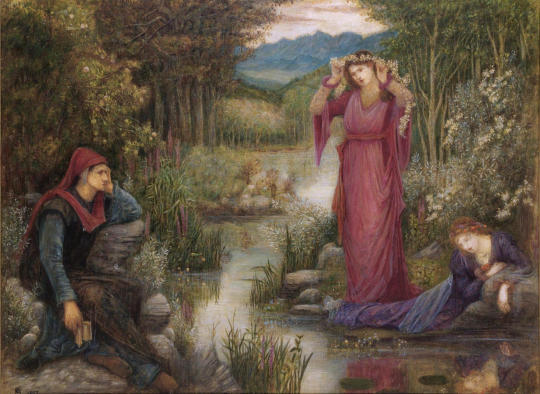
MWW Artwork of the Day (3/10/24)
Marie Spartali Stillman (British, 1844–1927)
Dante's Vision of Leah and Rachel (1887)
Watercolor on paper, 36.5 x 49 cm.
Private Collection
A renowned beauty and friend of William Michael Rossetti, Ford Maddox Brown, George Frederick Watts and William and Jane Morris, Marie Spartali Stillman became a well-known face of the Pre-Raphaelite movement as the occasional model for Gabriel Rossetti and Edward Burne-Jones. Dante's vision of Leah and Rachel occurs as he prepares to leave the seventh terrace on the Mountain of Purgatory; Lust. Leah can be seen gathering flowers, while Rachel serenely watches her own reflection. Significantly, this dream occurs between the pilgrim's experience of the seven deadly sins and his ascent into the Earthly Paradise. The tranquil presence of the biblical sisters acknowledges Dante's triumph over sin.
8 notes
·
View notes
Text
List of poets whose work I've posted:
Poetry Magazine selections
The Adroit selections
Diode Poetry selections
Sixth Finch selections
Ada Limon
Adam Zagajewski
Adonis
Allen Ginsberg
Amy Clampitt
Andrea Cohen
Anna Akhmatova
Anna Swir
Anne Sexton
Ben Johnson
Billy Collins
Cathy Linh Che
Carolyn Marie Rodgers
Chard deNiord
Christina Rossetti
Czesław Miłosz
Dalton Day
Denise Levertov
Dian Million
Donika Kelly
Dorianne Laux
Edward Hirsch
Elizabeth Bishop
Elizabeth “Sister Goodwin” Hope
Ellen Bryant Voigt
Gloria Bird
Gregory Orr
Gwendolyn MacEwen
Henry Wadsworth Longfellow
Jack Gilbert
James Hayford
James Longenbach
Jenny George
Jim Harrison
Joanna Newsom
John Berryman
John Dowland
John Keats
Jorie Graham
Joy Harjo
Kitchen McKeown
Kuhu Joshi
Langston Hughes
Linda Pastan
Lisel Mueuller
Louise Glück
Mary Karr
Mary Oliver
Mary Tallmountain
Matt Hohner
Matt Rasmussen
Matthew Arnold
Michael Gray Bulla
Miles Walser
Morag Smith
Natalie Diaz
Ocean Vuong
Penny Shutt
Phil Ochs
Phillip B. Williams
Roberta Hill Whiteman
Ronald Wallace
Ruth Stone
Sayat Nova
Sherman Alexie
Stephen Kampa
Sugawara no Michizane
Thomas Lux
T.S. Eliot
Wanda Coleman
W.H. Auden
Will Alexander
Wisława Szymborska
When the Light of the World Was Subdued, Our Songs Came Through: A Norton Anthology of Native Nations Poetry
myself
10 notes
·
View notes
Text
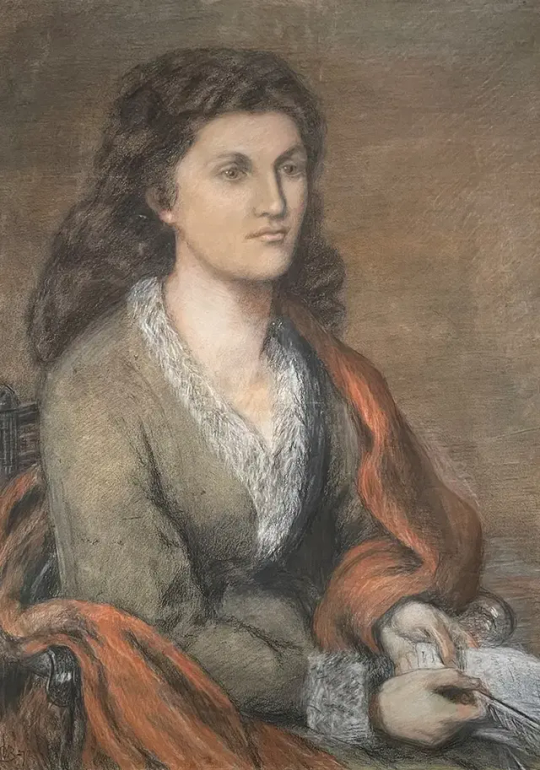
Mathilde Blind by Lucy Madox Brown, 1872
Mathilde Blind (born Mathilda Cohen; 21 March 1841 – 26 November 1896), was a German-born English poet, fiction writer, biographer, essayist and critic. In the early 1870s she emerged as a pioneering female aesthete in a mostly male community of artists and writers. By the late 1880s she had become prominent among New Woman writers such as Vernon Lee (Violet Paget), Amy Levy, Mona Caird, Olive Schreiner, Rosamund Marriott Watson, and Katharine Tynan. She was praised by Algernon Charles Swinburne, William Michael Rossetti, Amy Levy, Edith Nesbit, Arthur Symons and Arnold Bennett. Her much-discussed poem The Ascent of Man presents a distinctly feminist response to the Darwinian theory of evolution.
Blind's early political affiliations were shaped by the foreign refugees who frequented her stepfather's house, including Giuseppe Mazzini, for whom she entertained a passionate admiration and about whom she would publish reminiscences in the Fortnightly Review in 1891. Other revolutionaries who frequent her mother and stepfather's house in St. John's Wood included Karl Marx and Louis Blanc. Her early commitment to women's suffrage was influenced by her mother's friend Caroline Ashurst Stansfeld, who was active in the British feminist movement from its origins in the 1840s. These radical affiliations are manifested in Blind's politically charged poetry, and in her own unbending commitment to reform. As Richard Garnett observed, in the society of political refugees and radicals Blind was raised in, "admiration must necessarily be reserved for audacity in enterprise, fortitude in adversity... anything breathing unconquerable defiance of the powers that were."
#pre raphaelite#the pre-raphaelite sisterhood#on two fronts really#read the wikipedia if you have a minute those are just small excerpts of much interesting material#victorian women#women authors#women painters#victorian era#lucy madox brown#mathilde blind#women's rights#women's suffrage#pre-raphaelite sisterhood
4 notes
·
View notes
Text
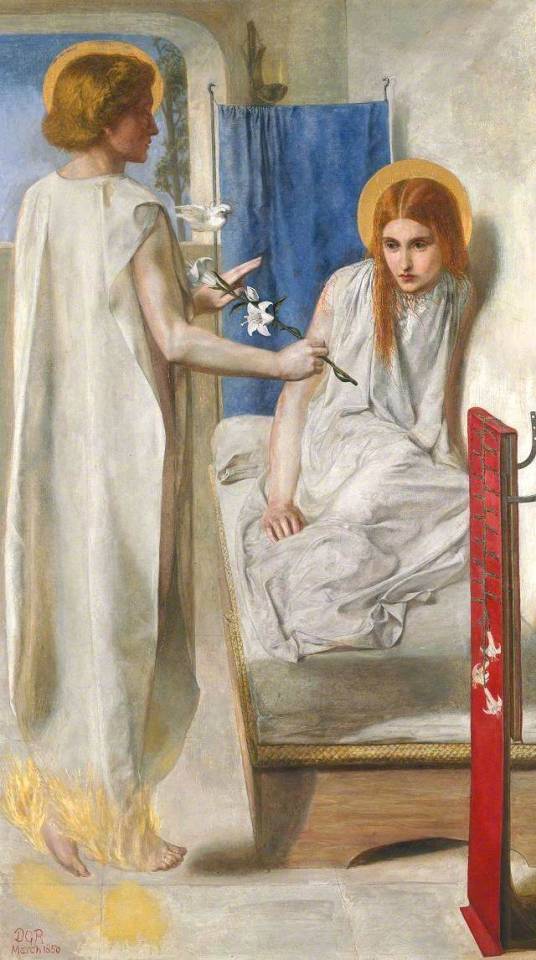

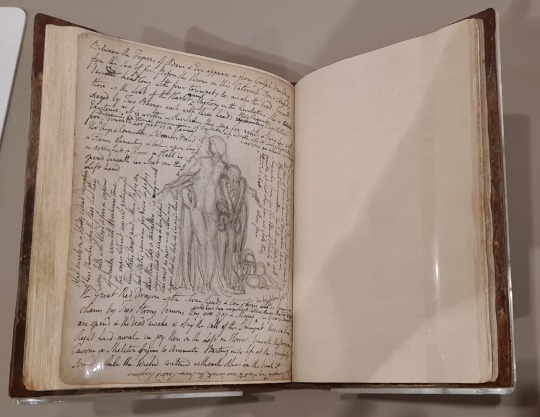
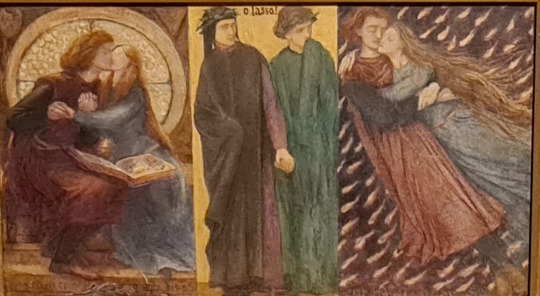


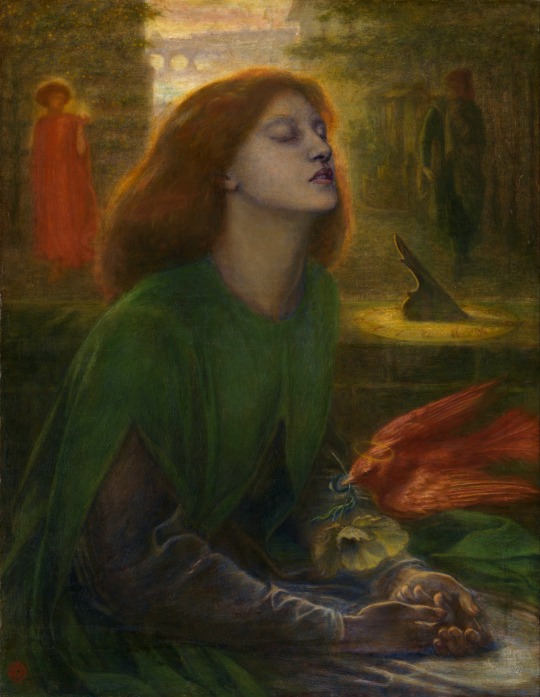
Wat? Ecce Ancilla Domini! (The Annunciation) (1849-50) en Study for ‘Ecce Ancilla Domini!’ (ca. 1849) door Dante Gabriel Rossetti, Notitieboek van William Blake, Paolo en Francesca (from Dante’s Inferno) (1846-48), Elizabeth Siddal with Dante Gabriel Rossetti (ca. 1853), The Girlhood of Mary Virgin (1848-49) en Beata Beatrix (1864-1870) door Dante Gabriel Rossetti
Waar? Tentoonstelling The Rossettis – Radical Romantics in Tate Britain, Londen
Wanneer? 9 augustus 2023
Tate Britain wijdt een tentoonstelling aan the Preraphaelite Brotherhood en meer in het bijzonder aan de familie Rossetti. Dichteres Christina Rossetti en schilder-dichter Dante Gabriel Rossetti zijn zus en broer. Elizabeth Siddal huwde met Dante Gabriel Rossetti. Een van Gabriels eerste olieverfschilderijen toont zijn zuster Christina tijdens een annunciatie-scène. Hun broer Michael poseerde voor de engel. Deze annunciatie werd geïnspireerd door middeleeuwse religieuze kunst, maar met een moderne psychologische invalshoek. De engel heeft Maria opgeschrikt uit haar dromen; haar gezicht toont schrik.
Een inspiratiebron voor Dante Gabriel Rossetti was William Blake, van wie ik in januari 2020 een tentoonstelling zag in dit zelfde museum. Toen Gabriel student was aan de Royal Academy leende zijn broer hem 10 shilling (nu zo’n 75 pond) om het notitieboek van Blake te kunnen kopen. Het boek versterkte zijn weerzin tegen de regeltjes en tradities van de Academy en een jaar later stopte hij dan ook met zijn studie.
Vader Rossetti was docent en vertaler van de Italiaanse middeleeuwse dichter Dante Alighieri. Dantes inferno verhaalt over de liefde van Francesco en Paolo, die beiden gedwongen zijn in een gearrangeerd huwelijk. In de compositie van Gabriel toont Paolo Francesca een boek waarin de minnaren Lancelot en koningin Guinevere zijn afgebeeld. De intimiteit van het moment eindigt in een kus. De minnaars worden echter betrapt en ter dood veroordeeld.
Elizabeth Siddal werkte in een hoedenwinkel toen ze in contact kwam met de pas opgerichte Preraphaelite Brotherhood. Ze poseerde voor verschillende schilderijen, onder meer voor Ophelia door John Everett. Later zou ze trouwen met Gabriel.
Het schilderij The Girlhood of Mary Virgin toont Christina en moeder Frances, die poseren als Maria en Anna. Hoewel Gabriel een atheïst was, waardeerde hij de kracht van religieuze kunst, symbolen en ideeën.
Op 11 februari 1862 vond Gabriel Elizabeth buiten bewustzijn met een lege fles laudium naast haar. Een dokter behandelde haar, maar ze stierf de volgende ochtend. Elizabeths leven en dood werd daarna hoofdthema in Gabriels werk. In Beata Beatrix vergelijkt Gabriel zijn gevoelens na Elizabeths overlijden met Dante Alighieri’s wanhoop na de dood van Beatrice. Een vogel brengt haar een papaver als boodschapper van de dood en de zonnewijzer symboliseert tijd. Op de achtergrond kijkt Dante naar Love, een engel die de vlam van Beatrice’s leven vasthoudt. De rivier Arno symboliseert de rivier Styx uit Dante’s Inferno.
Het tragische is dat Elizabeth Siddal, dankzij Gabriels postume verering, beter werd herinnerd als tragische muze dan als een zelfstandig kunstenaar. Het zou honderddertig jaar duren eer er een solotentoonstelling aan haar werk werd gewijd.
1 note
·
View note
Text
from The Writers Almanac: It's the birthday of Walt Whitman, born in West Hills, Long Island, New York (1819). Whitman worked as a printing press typesetter, teacher, journalist, and newspaper editor. He was working as a carpenter, his father's trade, and living with his mother in Brooklyn, when he read Ralph Waldo Emerson's essay "The Poet," which claimed the new United States needed a poet to properly capture its spirit. Whitman decided he was that poet. "I was simmering, simmering, simmering," Whitman later said. "Emerson brought me to a boil."
Whitman began work on his collection Leaves of Grass, crafting an American epic that celebrated the common man. He did most of the typesetting for the book himself, and he made sure the edition was small enough to fit in a pocket, later explaining, "I am nearly always successful with the reader in the open air." He was 37 years old when he paid for the publication of 795 copies out of his own pocket.
Many of Whitman's poems were criticized for being openly erotic. One of Whitman's earliest reviews had called the book "a mass of stupid filth," accusing Whitman of "that horrible sin not to be mentioned among Christians." But rather than censoring himself, Whitman added 146 poems to his third edition.
He began to grow a literary reputation that swung from genius to moral reprobate, depending on the reader. Thoreau wrote, "It is as if the beasts spoke." Willa Cather referred to Whitman as "that dirty old man." Emerson praised Whitman's collection as "the most extraordinary piece of wit and wisdom America has yet contributed," and the critic William Michael Rossetti proclaimed that Whitman was a talent on par with Shakespeare.
Whitman left New York when his brother was wounded in the Civil War, traveling to Virginia and then to Washington, D.C., to serve as a volunteer Army hospital nurse. He had a reputation for unconventional clothing and manners. He wrote, "I cock my hat as I please, indoors and out." With the help of well-placed friends, Whitman eventually found work as a low-level clerk in the Department of the Interior. But when former Iowa Senator James Harlan discovered Whitman worked in his department, he had him dismissed, proclaiming Leaves of Grass was "full of indecent passages," and that Whitman himself was a "very bad man" and a "free lover."
Whitman's friend William Douglas O'Connor immediately came to his defense. He arranged for Whitman to be transferred to the attorney general's office, and he published a pamphlet refuting Harlan's charges. Titled The Good Gray Poet: A Vindication, the small book praised Whitman's "nobleness of character" and went on to quote from positive reviews — and to ridicule Harlan as an under-read philistine.
The pamphlet became more than a vindication: it helped to radically alter the average reader's perception of Whitman as both a writer and as a man: Out with the image of the bawdy nonconformist and in with the "good gray poet," the nickname for Whitman that is still popular to this day.
Whitman spent the last 20 years of his life revising and expanding Leaves of Grass, issuing the eighth and final edition in 1891, saying it was "at last complete — after 33 y'rs of hackling at it, all times & moods of my life, fair weather & foul, all parts of the land, and peace & war, young & old."
Today, most scholars agree that Whitman was likely gay. When he was asked directly, toward the end of his life, Whitman declined to answer. But he did say, shortly before he died, that sex was "the thing in my work which has been most misunderstood — that has excited the roundest opposition, the sharpest venom, the unintermitted slander, of the people who regard themselves as the custodians of the morals of the world."
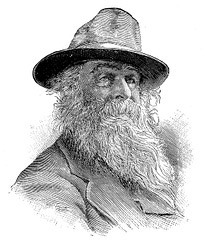
0 notes
Text
¡Damas en la Historia de la Fotografía!

Logró capturar la esencia humana de una forma magistral a través de la fotografía. La fotógrafa Julia Margaret Cameron fue conocida por sus hermosas imágenes de angelitos, retratos de misteriosas mujeres y algunas escenas religiosas.
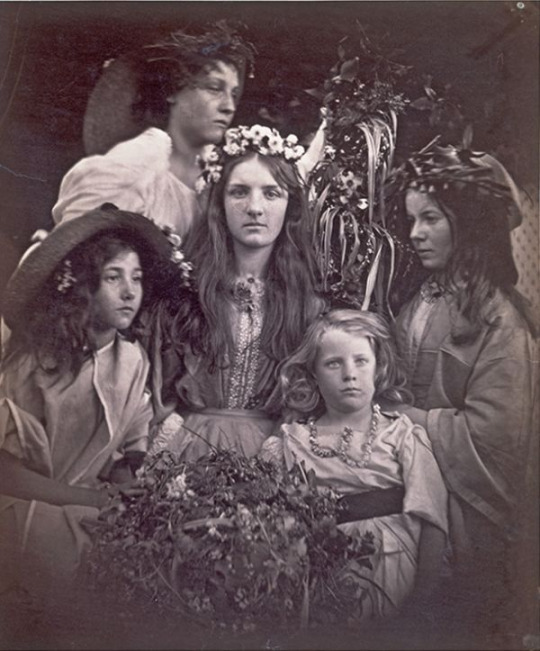
Todo comenzó con un regalo de una de sus hijas para alegrar los momentos de soledad que sufría cuando su marido se iba de viaje. A sus cuarenta y ocho años le regalaron una cámara de fotos, bastante primitiva en comparación con las actuales. Una sencilla caja de madera con una lente adherida, de la marca Jamin.
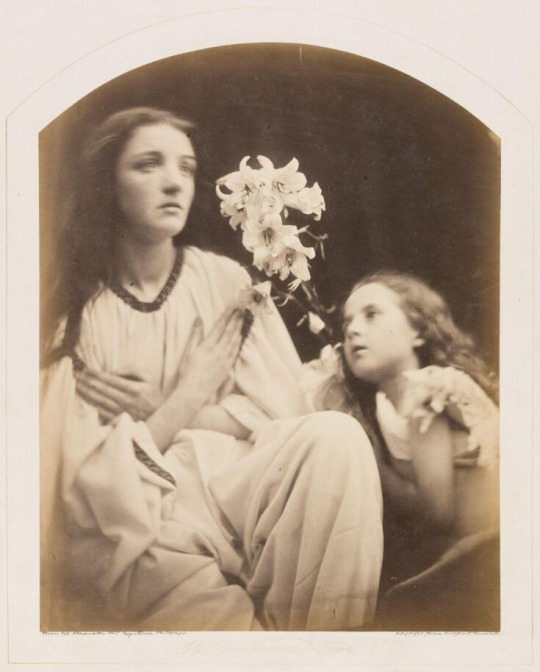
Empezó experimentando con la realización de retratos de personas que se encontraban en su entorno. Algunas de ellas fueron Alfred Tennyson, Charles Darwin, William Michael Rossetti o Julia Jackson (la madre de Virginia Woolf, fue sobrina nieta de Julia)…
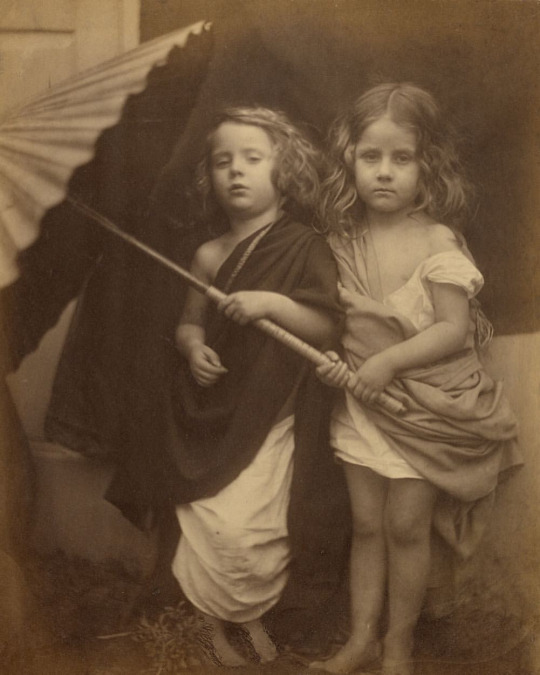
Su primer modelo fue un granjero, con el que obtuvo su primera fotografía. Pero desgraciadamente arruinó el negativo al tocarlo y no pudo conservarlo.
#¡Damas en la Historia de la Fotografía!#¿Esta es la imagen y algunos datos (O no) la “Historia” la pones tú? ¡La tuya! ¿Lo harás...?
1 note
·
View note
Text
pre raphaelites are so fucking funny did you know there was only like seven of them and they specifically hated other art of their day. So much that they called this guy - Sir Joshua Reynolds "Sir Sloshua"
"In particular, the group objected to the influence of Sir Joshua Reynolds, founder of the English Royal Academy of Arts, whom they called "Sir Sloshua". To the Pre-Raphaelites, according to William Michael Rossetti, "sloshy" meant "anything lax or scamped in the process of painting ... and hence ... any thing or person of a commonplace or conventional kind"."
Like read through this wikipedia article they were all so fucking funny. They were all just golden-age thinkers from 1848 who thought that the only real type of beauty existed before Raphael (hence the name). So they did artwork about medieval romance and the "age of chivalry", and like true victorians, they just made up a whole bunch of shit.
Their art is still pretty gorgeous though ngl, and I personally get even more enjoyment out of it by thinking about the word "sloshy"
#shut up bunny#prerephaelites#pre-raphaelite#pre raphaelism#pre raphaelite#sloshy#stop trying to make sloshy happen#I'm currently in the process of re-creating an everett millais painting so I'm not hating from outside the club#they just all took themselves way too seriously#and there was that whole drama with that dude's wife and stuff#it's on the wikipedia seriously it's entertaining
1 note
·
View note
Text
Which of his family members did Dante Gabriel Rossetti frequently use as a model in his paintings?

Christina Georgina Rossetti (1830-94) was a poet connected to the Pre-Raphaelite art movement. Born in London to the Italian poet Gabriele Rossetti (1783-1854), Christina was brought up in a creative atmosphere and her two older brothers went on to become founding members of the Pre-Raphaelite Brotherhood. Her most famous brother Dante Gabriel Rossetti (1828-82) is known for the typical paintings associated with the Brotherhood. William Michael Rossetti (1829-1919), on the other hand, was a writer and critic who ran the Pre-Raphaelite magazine 'The Germ', in which Christina had several poems published.
Christina sat for many of Dante Gabriel Rossetti’s artworks, including a quick sketch when she was sixteen and, most famously as the Virgin Mary in 'Ecce Ancilla Domini'. Dante also produced a cartoon based on one of Christina’s tantrums, which were quite frequent as a child.
From her thirties onwards, Christina spent most of her time looking after family members whilst also suffering from a thyroid disorder. Dante needed a lot of attention, often suffering from mental ill-health. During his worst periods, focusing on drawing portraits of his sister aided his recovery and return to the art world. Whilst Christina was a blessing to her family, her health began to deteriorate rapidly after a near-fatal heart attack in the early 1870s. In 1893, she developed breast cancer and, although the tumour was removed, she died the following year.
0 notes
Text
Extended Bibliography
Dennisoff, Dennis, Decadent Ecology in British Literature and Art, 1860-1910 (CUP, 2021)
Ehnenn, Jill R., ‘“Drag(ging) at memory’s fetter”: Michael Field’s personal elegies, Victorian mourning, and the problem of Whym Chow’, The Michaelian, n.s., 1 (2009)
Feuerstein, A, The political lives of Victorian animals: Liberal creatures in literature and culture (Cambridge: Cambridge University Press, 2019).
Field, Michael, Whym Chow: Flame of Love (London: Eragny Press, 1914).
Finch-Hatton, Harold, Advance Australia! An account of Eight Years’ Work, Wandering, and Amusement in Queensland, New South Wales, Victoria (London: W.H. Allen, 1885).
Kean H. ‘Human and animal space in historic ‘pet’ cemeteries in London, New York and Paris.’, in Animal death, ed. by J Johnston & F Probyn-Rapsey (Sydney: Sydney University Press, 2013).
Knobe, Bertha Damaris ‘A Cemetery for Dogs’ The Puritan volume IX Scollard, Clinton. “Grimalkin: An Elegy on Peter, Aged 12.” The Century Illustrated Monthly Magazine. Vol. XLVI. May. 1893.
Mazzeno, L. W., & Morrison, R. D. Animals in Victorian Literature and Culture: Contexts for Criticism (London: Palgrave Macmillan UK, 2017).
Moine, Fabienne, Women Poets in the Victorian Era: Cultural Practices and Nature Poetry (n.p: Routledge, 2016).
Rossetti, William Michael, Dante Gabriel Rossetti: His Family-Letters with a Memoir (Volume One) (n.p.: Ellis, 1895).
----------, Rossetti Papers 1862-1870 (London: Sands, 1903).
Simons, John, Rossetti’s Wombat: Pre-Raphaelites and Australian Animals in Victorian London (n.p.: Middlesex University Press, 2008).
Tague, Ingrid H. “Dead Pets: Satire and Sentiment in British Elegies and Epitaphs for Animals.” Eighteenth-Century Studies, vol. 41, no. 3, 2008, pp. 289–306.
Turner, J, Reckoning with the beast: Animals, pain, and humanity in the Victorian mind. Baltimore, Md (London: Johns Hopkins University Press, 1980).
Van Vechten, Carl, ‘The Cat and the Poet’, in The Tiger in the House (New York: A.A. Knopf, 1922).
Waugh, Evelyn, Rossetti: His Life and Works (London: Penguin Classics, 2022).
Winslow, Helen M., Concerning Cats : My Own and Some Others (Lothrop publishing Company, 1900).
1 note
·
View note
Photo
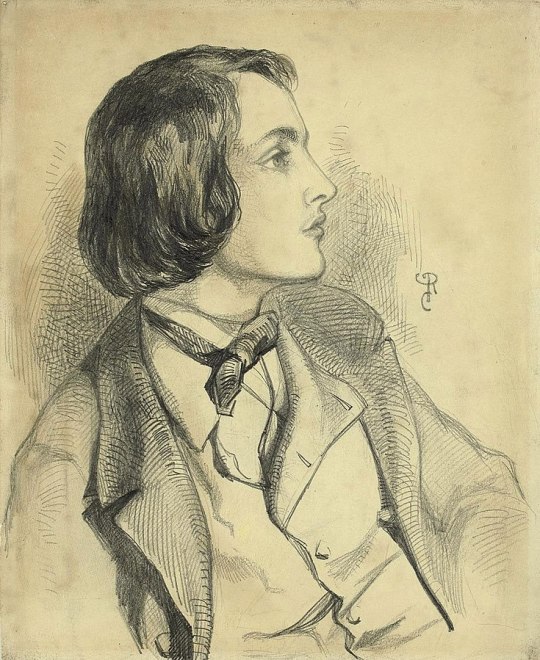
Dante Gabriel Rossetti, Portrait of William Michael Rossetti, 1846, pencil on paper.
18 notes
·
View notes
Photo

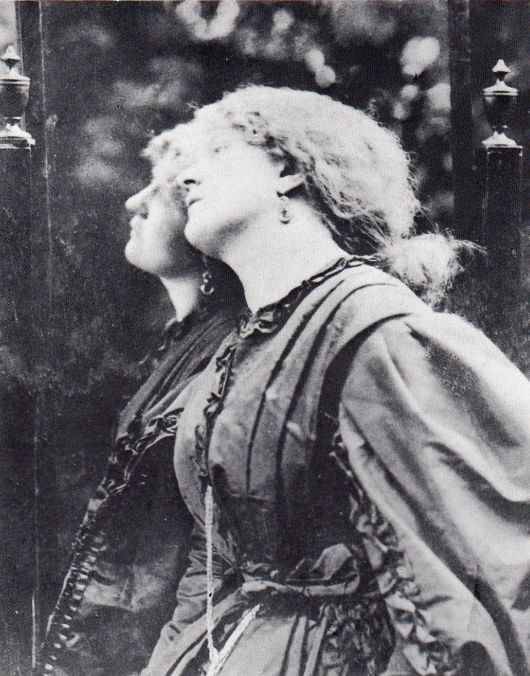
fanny cornforth, pre-raphaelite model and dante gabriel rossetti’s housekeeper until his death, died on 24 february 1909. she is pictured here as the sitter for rossetti’s fair rosamund (1861) and photographed in 1863. cornforth is often the subject of scholarly bias, owing in part to her status as rossetti’s longtime mistress and in part to her figure, which was fuller and more lush than the traditional sylph-like femininity typically associated with pre-raphaelite women. moreover, cornforth was working class, working as a servant from at least 1851: william michael rossetti wrote that “she had no charm of breeding, education, or intellect”. however, cornforth appeared in many of rossetti’s most famous works, including bocca baciata, and was the first person to open a dedicated museum to rossetti’s work after his death.
#Pre-Raphaelite Brotherhood#pre-raphaelite#Pre Raphaelite#preraphaelite#pre raphaelite brotherhood#art#art history#fine art#fanny cornforth#dante gabriel rossetti#Rossetti#william michael rossetti#victorian era#Victorian Art#victorian history#victorian poetry#19th century art#19th Century History#women in art#pre raphaelite women#otd#dotd
168 notes
·
View notes
Text
people are like “the rossettis all turned out so different!!! maria a nun, william an atheist, dante a painter, and christina a poet” and i’m just like “that’s just what it’s like having four kids”
#once you have more than three children you forfeit their right to have anything in common w each other#but they all may or may not be close growing up... depending on how much of a dick each of them is#i mean#all of the rossettis love each other#even tho the boys were all lurid and promiscuous and the gals were all pious and devoted to god#they cared about each other!!!#text post#maria francesca rossetti#william michael rossetti#dante gabriel rossetti#christina rossetti#rossetti#rossetti family#pre raphaelism
3 notes
·
View notes
Photo

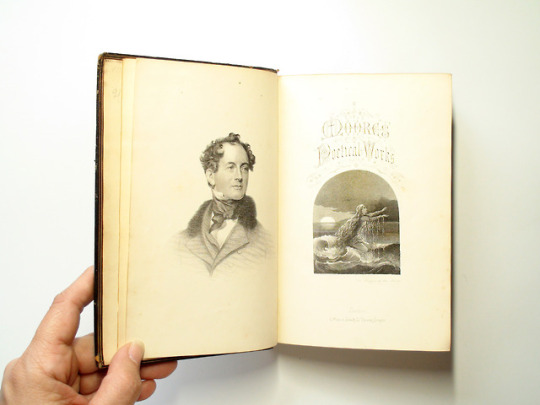
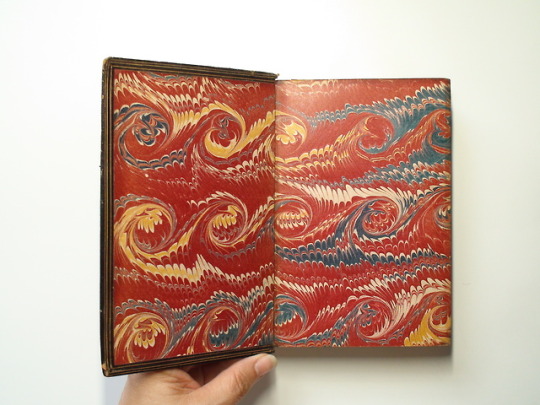
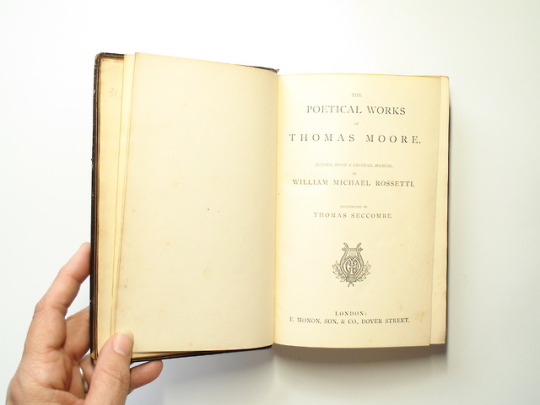
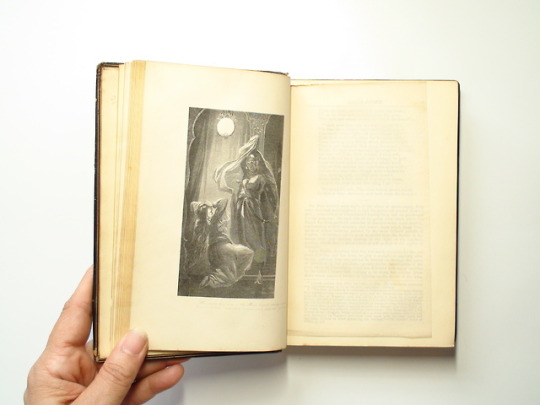
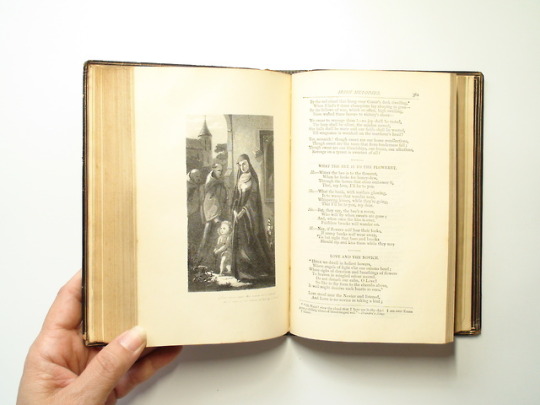
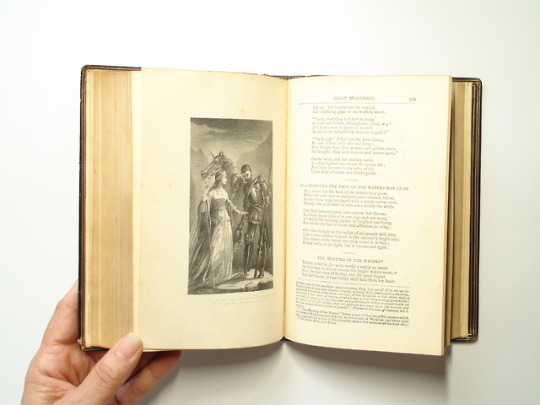
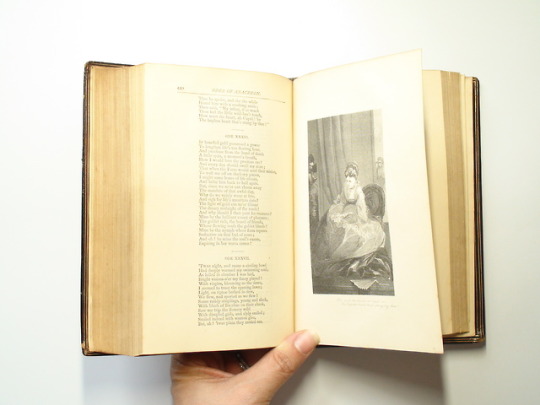
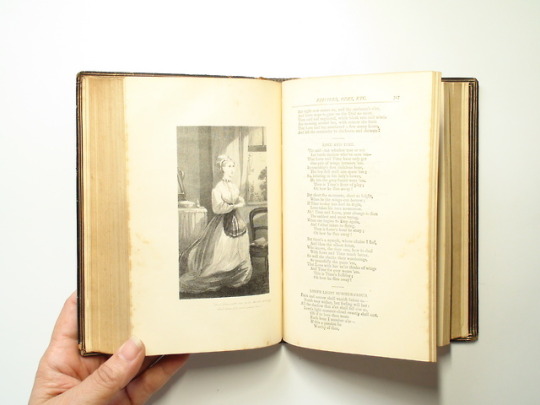
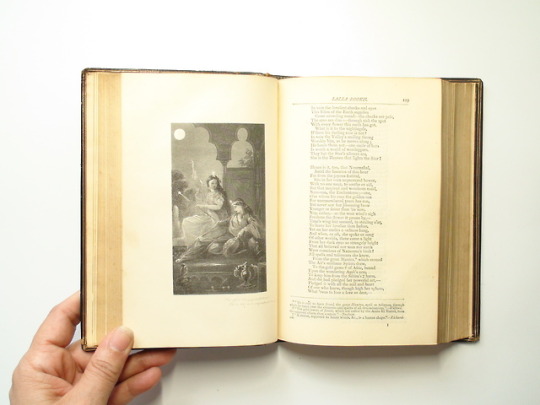
The Poetical Works of Thomas Moore
by Thomas Moore
Edited With a Critical Memoir by William Michael Rossetti
Illustrated by Thomas Seccombe
GORGEOUSLY ILLUSTRATED
STEEL ENGRAVINGS
Publisher: E. Moxon, Son, and Co., London
Copyright: No date printed, c1872
BUY ON ETSY
#thomas moore#poetry#poems#romantic poems#leather books#bookish#books#antiquarian books#victorian style#victoriana#william michael rossetti#illustrated books#Books and Literature#books and libraries#Beautiful books#booklove#bookworm#bookstore#antiquarian book seller
3 notes
·
View notes